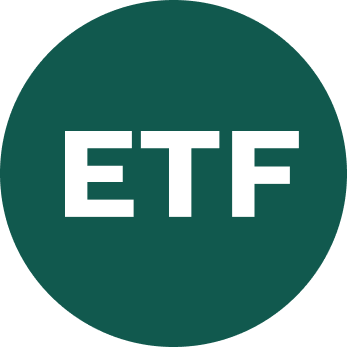

Understand the Risks, Costs & KIDs
Every investment carries some level of risk, and ETFs are no exception. Here, we break down the potential risks, costs, and key considerations to help you make informed investment decisions with confidence.

Understand the Risks: Key Considerations Before Investing in ETFs
If you are looking for higher returns, there are no magic formulas. To aim for higher returns you will have to take more risk. Exchange-Traded funds (ETFs) can help to manage these risks, but here you will find some of the key risks that arise from investing in them (please note: this list is not exhaustive).
ETFs offer an efficient and flexible way to invest, but it’s important to understand both the potential rewards and risks involved. At MeDirect Bank, we aim to provide you with the knowledge you need to make confident, informed decisions about your investments.
Market Risk
The value of an ETF can rise or fall depending on the performance of its underlying assets. However, the actual market risk of an ETF depends heavily on the weight of each position in the fund. For example, if an ETF is heavily concentrated in a few stocks or sectors, the performance of those assets can have a disproportionate effect on the ETF’s value. This means that ETFs with a high concentration in specific sectors or instruments (such as technology or energy stocks) can experience greater volatility.
For investors, it is important to review the ETF’s composition and understand how much weight each position carries. Highly concentrated ETFs can expose you to increased market risk, as even small fluctuations in the value of major holdings could have a significant impact on the ETF’s performance.
Tracking Errors
An ETF seeks to replicate the performance of its benchmark index, but there may be small discrepancies, known as tracking errors.
These discrepancies arise from factors like management fees, transaction costs, and the timing of dividend payouts or rebalancing. While tracking errors are usually minimal, they can result in a slight difference between the ETF’s performance and the index it tracks.
Liquidity Risk
ETFs with lower trading volumes may face liquidity challenges, especially during periods of market stress. This could result in longer times to sell the ETF, or wider bid-ask spreads, which could impact the execution price. When selecting ETFs, consider those with higher trading volumes to reduce liquidity-related concerns.
Currency Risk
Investing in ETFs denominated in foreign currencies or holding international assets can expose you to currency risk. Exchange rate fluctuations can affect the value of your investment. For example, if your local currency weakens against the foreign currency, your returns may increase, but if it strengthens, your returns could decrease—even if the underlying assets perform well. This risk is important to consider, particularly in global ETFs.
Fees and Costs: What’s Included in the Price of an ETF?
While ETFs are generally known for their cost-efficiency, it’s crucial to understand the fees that are included in the price of the ETF. These costs are automatically factored into the ETF’s price and are not charged separately. Here’s a detailed look at the fees associated with ETFs:
- Management Fee and other ongoing costs
- This fee covers the cost of managing the ETF, including portfolio maintenance, asset research, and administrative tasks. It’s expressed as a percentage of the fund’s assets and is deducted directly from the ETF’s market price.
- Ongoing transaction fees
Fees charged for the transactions done within the ETF.
- Total Cost
The total cost represents the total cost of managing and operating the ETF, including the management fee and other operational expenses. It is presented as a percentage (e.g., 0.2%) of the ETF’s assets and is automatically deducted. A lower total cost can help improve your long-term returns. - Trading Fees
Brokerage commissions are charged when you buy or sell ETFs. These fees are set by MeDirect and can be found in our Tariffs and Charges Overview document. Keep in mind that frequent trading can increase your overall costs, so it’s important to align your investment strategy with your long-term goals.
- Invest with Confidence
ETFs offer a straightforward way to diversify and grow your investments, but it’s essential to understand the associated risks and costs. At MeDirect, we’re here to guide you every step of the way, ensuring you have the knowledge and tools to make well-informed decisions.
Understanding KIDs for ETFs: A Guide for Our Customers
What Are KIDs?
KIDs, or Key Information Documents, are standardized documents designed to help investors make informed decisions about Exchange-Traded Funds (ETFs). These documents are prepared and provided by the ETF issuers and offer a concise overview of the most critical information about the product. KIDs are regularly updated to reflect any changes in the product’s structure, costs, or performance scenarios, ensuring that the information remains accurate and relevant.
Why Are KIDs Mandatory?
KIDs are a requirement under the PRIIPS regulation, which ensures that investors have access to clear, accurate, and standardized information before making investment decisions. At our bank, we believe in the principle of ‘No KID, No Deal.’ If a KID isn’t provided in all three languages (Dutch, French, and English), the product cannot be sold—ensuring your protection comes first.
- What Kind of Information Is Included?
A KID provides a clear snapshot of essential details about an ETF, including: - Product Overview: What the ETF is and its objectives.
- Risks and Returns: A summary of potential risks and expected returns, including a risk indicator.
- Costs: Transparent disclosure of all costs involved in investing in the ETF.
- Performance Scenarios: How the investment may perform under different market conditions.
- Other Key Information: Such as holding periods, potential consequences of early exits, and more.
How to Use KIDs to Your Advantage
KIDs empower you to make well-informed investment decisions. By reading the KID, you can:
– Understand the risks involved and determine if the ETF suits your risk tolerance.
– Get a clear breakdown of costs to assess whether the investment is cost-effective.
– Compare ETFs side by side to find the one that best aligns with your needs.
Our Commitment to Transparency
At MeDirect we are committed to providing you with all the tools and information you need to make sound financial decisions. You can find the KID for every ETF in the product card on our platform, making it easy to access all the key information you need before investing. Our team is also here to help answer your questions or guide you in understanding KIDs.
With KIDs, navigating the world of ETFs is clearer, safer, and more transparent than ever before. Let’s make investing simpler—together.